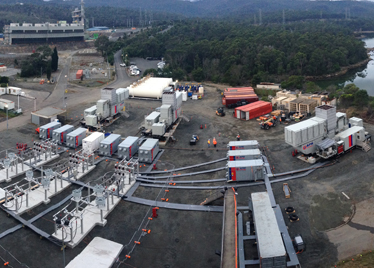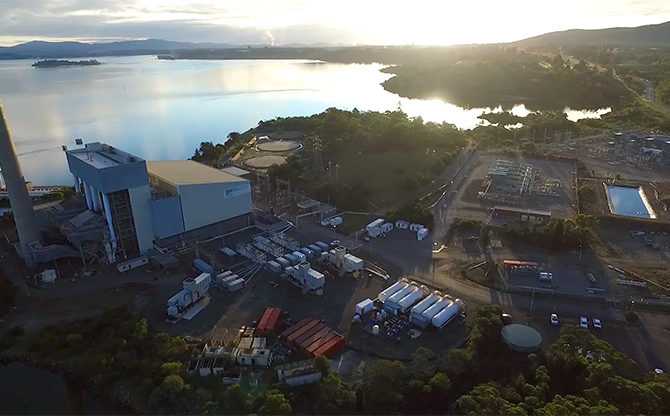Challenges
- Rapid installation to offset hydropower deficit, supply disruption from mainland
- Rigorous environmental and noise regulations
- Need for fuel flexibility to use diesel in short term and gas in long term
Background
In late 2015, a fault in the undersea power cable connecting Tasmania and mainland Australia reduced the island state’s electrical import capacity by 500MW – about 40 percent of its non-peak power consumption. At the same time, Tasmania’s hydropower reserves were quickly falling – from a total system storage level of 24.8 percent in December 2015 to 15.5 percent in early March 2016 – due to an unprecedented period of low inflow to storages. By early 2016, the Hydro Tasmania engaged with suppliers capable of providing mobile generation solutions that could be implemented rapidly to supplement its remaining generating capacity, while awaiting repair of the undersea power cable and water levels in its hydropower reservoirs to replenish.
Solution
In March 2016, Hydro Tasmania contracted APR Energy to install three dual-fuel mobile gas turbines to generate up to 75MW of electricity. The power plant was completed two months later. The fuel flexibility of APR Energy’s TM2500+ turbine technology offers Hydro Tasmania the ability to switch seamlessly between diesel and natural gas as needed. Running on diesel and using water-injection, the turbines produce 93 percent less nitrogen oxide than a typical high-speed diesel reciprocating engine. In addition to their emissions benefits, the power-dense turbines require approximately one-third of the space needed for an equivalent-output plant using diesel reciprocating engines, fitting well on Hydro Tasmania’s existing Bell Bay plant site, and integrating into its infrastructure. The turbines also meet Hydro Tasmania’s acoustic emissions requirements, generating 20 percent less noise than an equivalent MW reciprocating engine plant.


